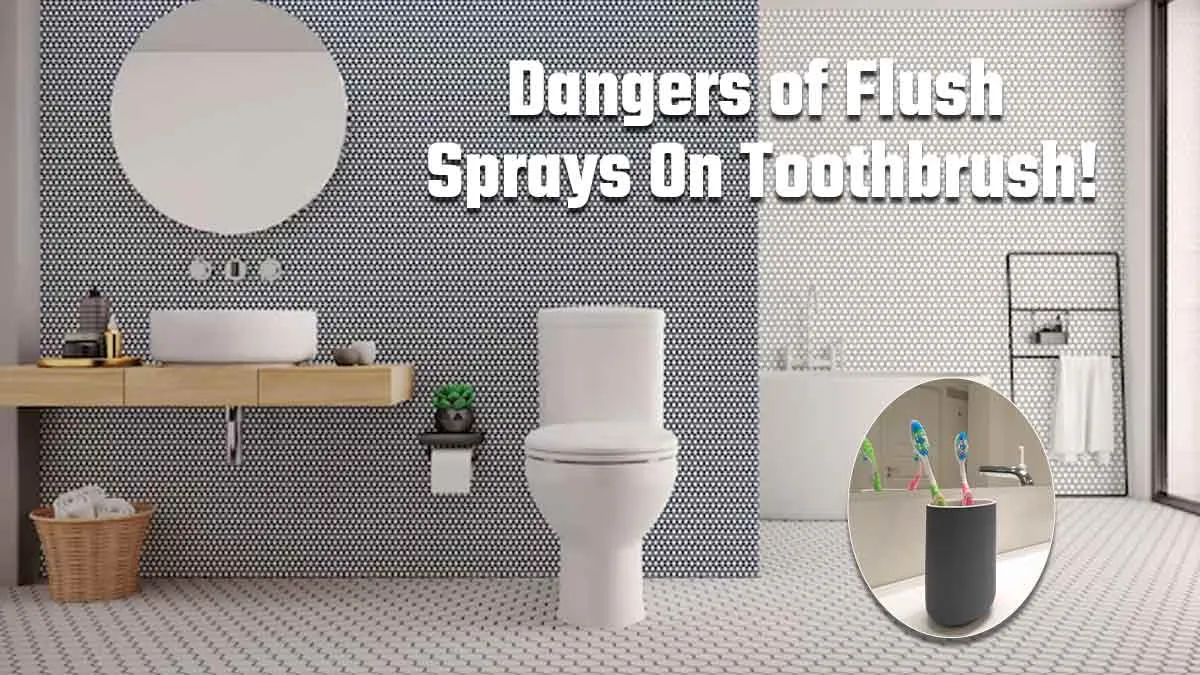
Your toothbrush might be your oral hygiene hero, but it could also be a hidden hub for germs—including bacteria from toilet flushes. Every time you flush, microscopic particles from the toilet bowl spray into the air, landing on nearby surfaces like your toothbrush. Studies show that toothbrushes can harbor millions of bacteria, including E. coli, streptococcus, and mold. Even rinsing with water won’t fully sanitise it. The good news? Simple fixes can protect your brush and your health. Here’s how to keep your toothbrush safe, clean, and germ-free.
Table of Content:-
Why Your Toothbrush Is a Germ Magnet
View this post on Instagram
Ryan Fernando, Nutritionist, The Millionaire's Health, Bengaluru, doesn’t mince words as he explains, “Your toothbrush is a pool of bacteria and poop. Every morning, you’re putting it straight into your mouth. If stored near the toilet, every flush sprays germs onto it.”
Research supports this: A 2022 study in Applied and Environmental Microbiology found that toothbrushes stored in bathrooms host up to 100 million bacteria, including fecal germs. These bacteria can survive on bristles for days, increasing the risk of infections and illnesses.
The Science of 'Toilet Plume'
When you flush, the toilet plume—a mix of water droplets and germs—can shoot up to 6 feet. A 2023 review in Journal of Hospital Infection confirmed that these droplets settle on surfaces like sinks and toothbrushes within minutes. E. coli and other pathogens survive on bristles for days, raising infection risks. This phenomenon, known as ‘aerosolisation,’ is why storing your toothbrush far from the toilet is crucial.
ALSO READ: Gym or Toilet Seat: Which Is Dirtier? A Doctor Explains Which Has More Bacteria
4 Simple Solutions to Sanitise Your Toothbrush

- Sanitise Weekly: Soak bristles in antibacterial mouthwash or hydrogen peroxide for 10 minutes. This kills bacteria and prevents buildup.
- Replace Every 3 Months: Worn bristles trap more germs and clean poorly. A fresh brush ensures better hygiene.
- Keep It 6 Feet from the Toilet: Distance reduces exposure to flush sprays. Store your brush in a cabinet or on a shelf away from the toilet.
- Avoid Airtight Covers: Trapped moisture breeds bacteria. Use ventilated caps instead, which allow airflow and keep bristles dry.
Fernando adds, “Airtight covers turn your brush into a bacteria factory. Ventilated silicone caps allow airflow, keeping bristles dry and reducing germ growth.”
Upgrade Your Toothbrush Care
- UV Sanitisers: Devices like UV toothbrush cleaners kill 99% of germs in minutes. They’re a great investment for added protection.
- Travel Smart: Use a ventilated case when on the go to prevent contamination.
- Store Upright: Let bristles air-dry vertically to prevent moisture buildup, which can lead to mold and bacteria growth.
- Fernando’s pro tip: “If you want next-level protection, invest in a UV sanitiser. It’s a game-changer for killing stubborn germs.”
What Not to Do

- Don’t Share Brushes: Sharing toothbrushes swaps saliva and germs, increasing the risk of infections.
- Skip Dishwashers/Microwaves: Heat can warp bristles and damage the brush.
- Avoid Covering Wet Bristles: Trapped moisture creates a breeding ground for mold and bacteria.
ALSO READ: Western vs Indian Toilets: How Your Sitting Position Influences Digestion and Health
Why Toothbrush Hygiene Matters
Poor toothbrush hygiene doesn’t just affect your oral health—it can impact your overall well-being. Bacteria like E. coli and streptococcus can cause infections, stomach issues, and even respiratory problems if they enter your body. By keeping your toothbrush clean and stored properly, you’re not just protecting your teeth and gums; you’re safeguarding your entire body.
Conclusion
Your toothbrush doesn’t have to be a bacteria buffet. By storing it far from the toilet, sanitizing weekly, and replacing it regularly, you’ll slash your exposure to harmful germs. Storing a brush near the toilet is like feeding it germs daily. Small changes today can protect your health tomorrow—because even the best oral care routine can’t beat a clean toothbrush.
Also watch this video
How we keep this article up to date:
We work with experts and keep a close eye on the latest in health and wellness. Whenever there is a new research or helpful information, we update our articles with accurate and useful advice.
Current Version
